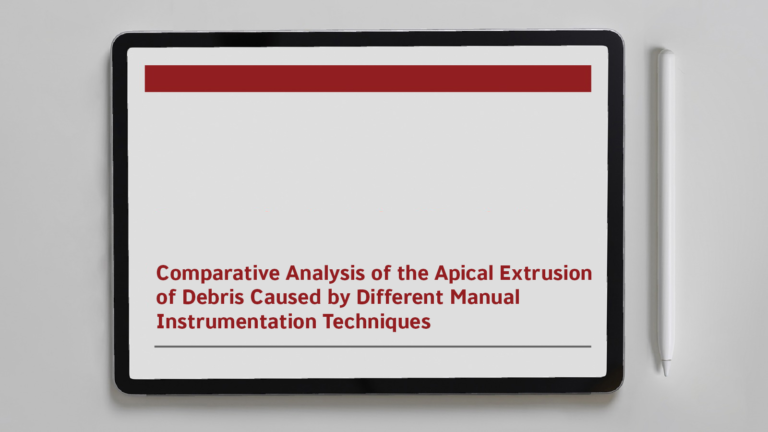
Objectives: The aim of this study was to evaluate the cyclic and torsional fatigue resistance of the reciprocating single-file systems Reciproc Blue 25.08 (VDW GmbH, Munich, Germany), Prodesign R 25.06 (Easy Dental Equipment, Belo Horizonte, Brazil), and WaveOne Gold 25.07 (Dentsply/Tulsa Dental Specialties, Tulsa, OK, USA).
Materials and methods: Sixty reciprocating instruments of the systems Reciproc Blue R25 (RB #25 .08 taper), Prodesign R (PDR #25 .06 taper), and WaveOne Gold (WOG #25 .07 taper) (n = 20) were used. Cyclic fatigue resistance testing was performed by measuring the time to failure in an artificial stainless steel canal with a 60° angle of curvature and a 5-mmradius located 5mm from the tip (n = 10). The torsional test (ISO 3630-1) evaluated the torque and angle of rotation at failure of new instruments (n = 10) in the portion 3 mm from the tip. The fractured surface of each fragment was also observed using scanning electron microscopy (SEM). In addition, a supplementary examination was performed to measure the cross-sectional area of each instrument 3 and 5 mm from the tip. The data were analyzed using one-way ANOVA and Tukey’s test, and the level of significance was set at 5%.
Results: The cyclic fatigue resistance values of PDR 25.06 were significantly higher (P < 0.05). RB 25.08 showed higher fatigue resistance than WOG 25.07 (P < 0.05). The torsional test showed that PDR 25.06 had lower torsional strength (P < 0.05). No differences were observed between RB 25.08 and WOG 25.07 (P > 0.05). PDR 25.06 showed higher angular rotation values than RB 25.08 and WOG 25.07 (P < 0.05). RB 25.08 presented higher angular rotation than WOG 25.07 (P < 0.05). The crosssectional area analysis showed that PDR 25.06 presented the smallest cross-sectional areas at 3 and 5 mm from the tip (P < 0.05).
Conclusion: PDR 25.06 presented the highest cyclic fatigue resistance and angular rotation until fracture compared to RB 25.08 and WOG 25.07. In addition, RB 25.08 and WOG 25.07 had higher torsional strength than PDR 25.06. Clinical relevance In endodontic practice, thermally treated reciprocating instruments have been used for the root canal preparation of curved and constricted canals; therefore, these instruments should present high flexibility and suitable torsional strength to minimize the risk of instrument fracture.
Keywords
NiTi alloy . Reciprocating motion . Thermal treatment. Cyclic fatigue.
Rua Barão de Paraopeba, 230, Jardinópolis, Belo Horizonte – Minas Gerais – 30532-150 – CNPJ: 034407030001-29
